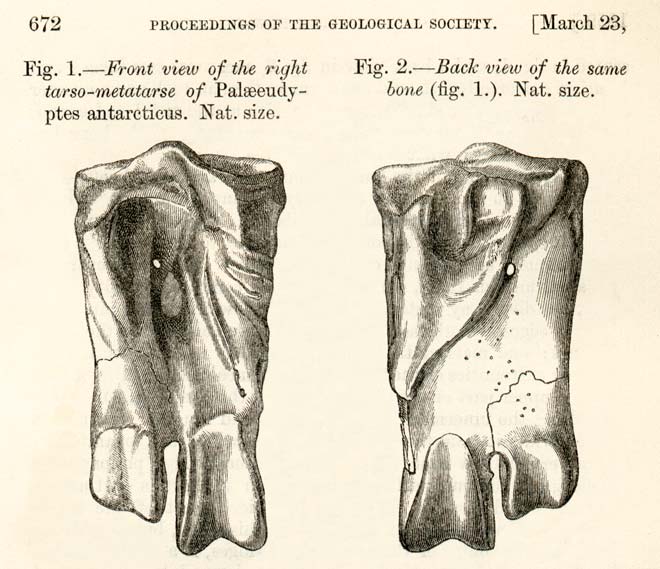
British palaeontologist Thomas Huxley made this drawing of a fused ankle bone (tarsometatarsal) from the first finding of a penguin fossil. It was discovered in New Zealand at Kakanui, North Otago, in 1848. It belonged to a penguin that lived about 30 million years ago. The bone is dense, unlike a flying bird’s bones, which suggests that penguins had already long given up flight by that stage of their evolutionary history. Huxley gave it the name Paleeudyptes antarcticus.
Te whakamahi i tēnei tūemi
Private collection, R. Ewan Fordyce
Reference:
T. H. Huxley, 'On a fossil bird and a fossil cetacean from New Zealand.' Quarterly Journal of
the Geological Society of London 15 (1859): 672
This item has been provided for private study purposes (such as school projects, family and local history research) and any published reproduction (print or electronic) may infringe copyright law. It is the responsibility of the user of any material to obtain clearance from the copyright holder.






Tāpiritia te tākupu hou